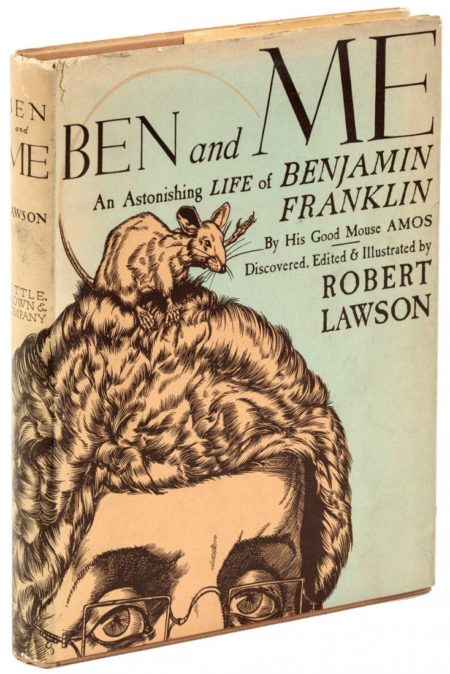Amos

One in a series of posts dedicated to pop-culture depictions of mice — as symbolic representations of abject other, rebellious scamp, intrepid explorer, scrappy survivor, resourceful collaborator, and habitat experimenter — from 1904–2003.
Robert Lawson’s Ben and Me (1939) is a life of Benjamin Franklin as told by his mouse, Amos, to whom Franklin seems to have been indebted for some of his most brilliant ideas.
Whimsically illustrated in pen-and-ink by Lawson, the book humorously recounts the invention of the Franklin stove and bifocal glasses, Franklin’s kite experiment, his service as ambassador to France, and so forth. Amos, who claims to have helped with these innovations, lives inside Franklin’s fur cap.
Like the early Mickey Mouse, Amos is prideful, opinionated, and ingenious; it’s interesting to see this sort of character appear at the apex of the Thirties (1934–43) — i.e., just as MM is undergoing “Disney-fication,” and becoming a model citizen.
Amos quits Franklin’s service for a while, then agrees to return, but only if Franklin signs a contract outlining his terms. While Franklin is reading the contract, Thomas Jefferson arrives, struggling to write the opening lines of the Declaration of Independence. Inspired by the language of Amos’s contract, Jefferson incorporates similar phrasing into the Declaration.
In 1953, the book was adapted by Walt Disney Productions into a short film of the same name. With the great Sterling Holloway (Winnie the Pooh, the Cheshire Cat, Kaa) voicing Amos. The book is much better, of course.

